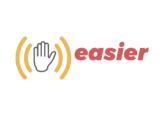Why do we need an avatar?
Deaf signers around the world face continual challenges in daily interactions with non-signing populations. The gold standard for translating between sign and spoken languages are qualified (sign language) interpreters who are essential to facilitating communication in educational, healthcare, and legal settings, among many other situations.
However, many daily interactions between signers and non-signers consist of short conversations over hotel desks, at store counters, or in office foyers. Because these interactions are so limited in scope and duration, hiring a certified interpreter is rarely an option. Firstly, because that would be prohibitively expensive and secondly because in most countries there is a serious shortage of qualified interpreters.
In such situations, an automatic translation system between spoken and sign languages would reduce communication barriers, leading to greater inclusivity. And this is what we are trying to achieve with the EASIER project.
Meet Paula, the EASIER avatar
One of the goals of EASIER is to develop a fully understandable avatar. The project aims to accomplish this through built-in knowledge of human kinematics, human perception, and a new, hybrid approach to linguistic motion representation. This approach combines the communicative emphasis of animated characters with the realism of video, which results in better clarity on small screens.
EASIER avatar will not be limited to portraying a single sign language. The project is targeting BSL (British), LSF (French), LIS (Italian), DGS (German), DSGS (Swiss-German), NGT (Dutch), and ΕΝΓ (Greek) sign languages.
Below, you can see Paula signing the same sentence, “Hello, I’m ready to begin“, in LSF, DSGS, and ΕΝΓ.
Work in progress – feedback needed
Stakeholder involvement is of utmost importance to EASIER. The project is continuously liaising with Deaf signers from across Europe and taking their feedback into account. This allows us to improve so that we can better cater to the needs of end users.
In the video displayed above, LSF signers might have noticed a good example of a regional variant in the word “commencer” (to begin). All of our informants used the two-handed version, just as displayed by Paula, but we have recently learned that there are signers who sign “commencer” using only one hand.
We would therefore like to encourage you to contact us if you spot any other regional variants in any of the displayed languages. We also welcome feedback on the general performance of the EASIER avatar. You can send your input to feedback (at) project-easier.eu.
Thank you for sharing your comments. Your feedback will help us improve Paula’s performance!

